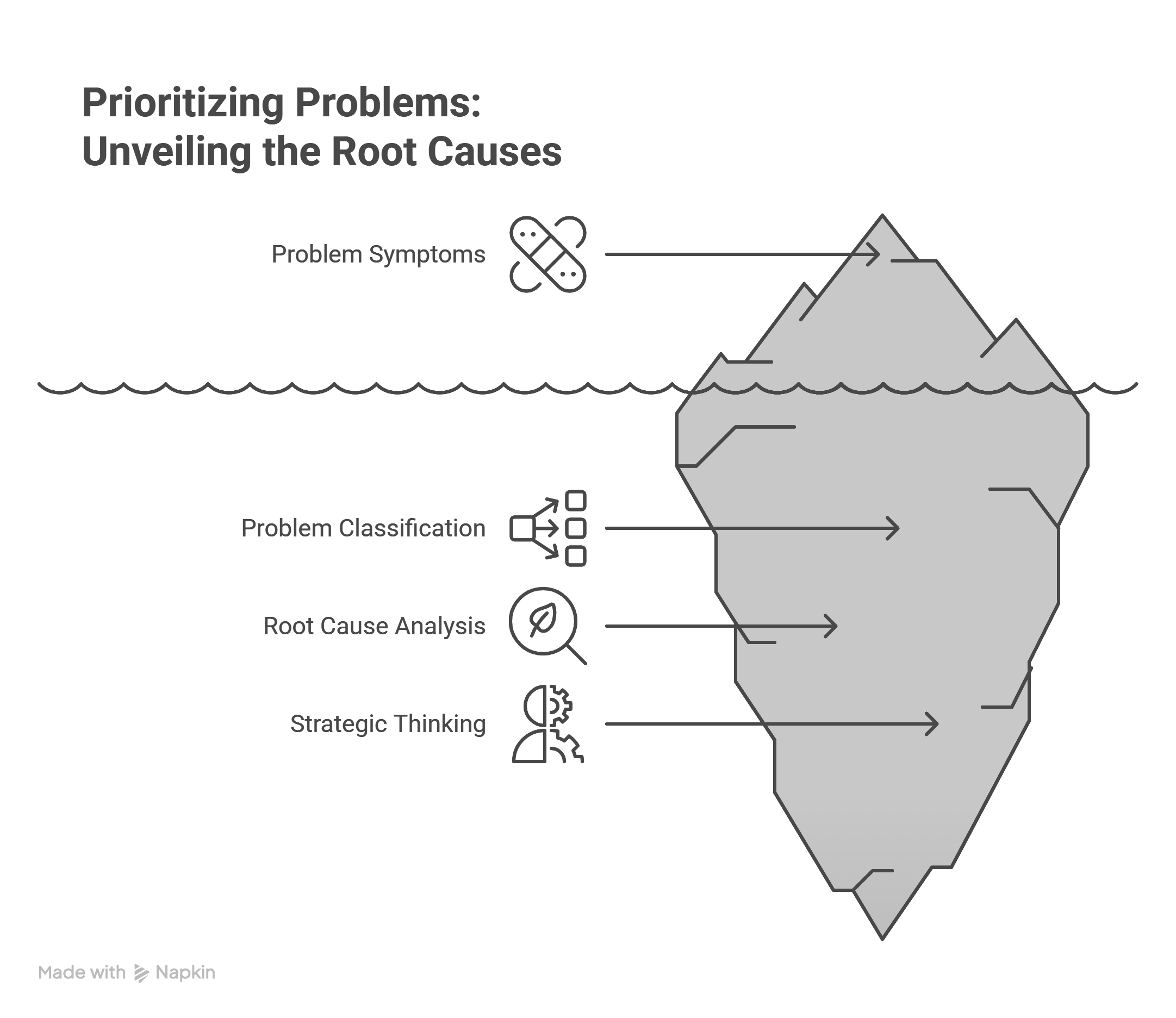Prioritizing Problems
Prioritizing Problems: The Design Thinking Approach
Design thinking should be reserved for problems that are truly worth the effort, specifically those with an audacious goal. Not all problems are created equal; some are minor "bruises," while others are more serious "cancers." The key is to distinguish between them and allocate your resources accordingly.
Bruises vs. Cancers
Problems can be classified into two main categories:
- Bruises: These are minor issues that tend to heal or resolve on their own over time. Much like a small cut on a finger, they don't require significant intervention to heal. A common mistake is to over-engineer a solution for a bruise, like squeezing a pimple, which can make the problem worse. Historically, about 80% of all problems are bruises that are best left to time.
- Cancers: These are problems that, if left unattended, will worsen and have a more significant, negative impact. A seemingly small habit, like watching reels for 30 minutes before bed, can become a "cancerous" problem that affects sleep quality, work performance, and relationships. Design thinking is particularly suited for solving these complex, "cancerous" problems.
The challenge is to correctly identify a problem's nature. A good strategy is to create physical, emotional, and temporal distance from the problem. When viewed from a distance, many problems that seem monumental up close will appear much smaller and less significant.
Perma Fix vs. Quick Fix
When solving a problem, there are two main approaches:
- Quick Fix: This approach addresses a problem's symptoms directly with a temporary solution, also known as a "band-aid solution" or Jugaad. It's a quick and easy way to deal with an issue but doesn't solve the underlying cause.
- Perma Fix: This approach, central to design thinking, involves going from a problem's symptoms to its root causes to create a lasting solution. It is used for high-frequency and high-impact problems, where a quick fix would be insufficient. A good doctor, for example, practices perma fix by diagnosing symptoms to find the underlying problem and its root causes, rather than just treating the symptoms.
Design thinking is a perma fix approach. It requires you to be a "man of contemplation" rather than just a "man of action" by asking questions like "Why am I doing this?" before jumping into a task. One should always work at their pay grade but think two levels above to gain an objective perspective and avoid getting bogged down in minor details that don't align with the bigger picture. This higher-level thinking can help you determine if a problem is a bruise that can be ignored or a cancer that requires a perma fix.


No Comments